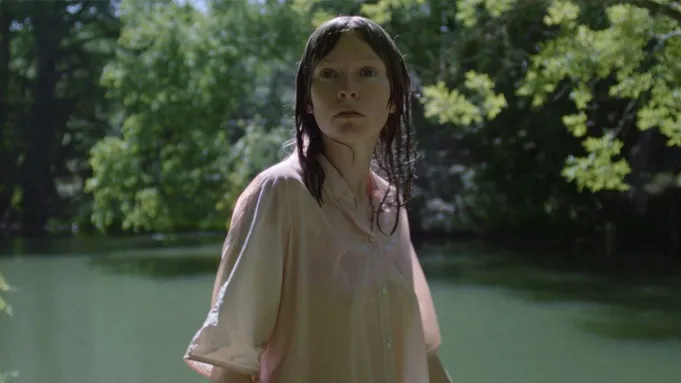“Family Portrait,” the debut feature by writer-director Lucy Kerr, delves into the realm of family dynamics through an artistic lens, creating a visually captivating and emotionally enigmatic experience. While rooted in a simple premise of a family reunion and an impending disaster, the film’s focus lies in the evocation of moods and sensations rather than a conventional plot.
At the heart of the film is Katy (played by Deragh Campbell), a young woman who returns home with her new boyfriend, Olek (Chris Galust), for the family’s annual group photo. As the family gathers, tensions and anxieties simmer beneath the surface, and the film masterfully portrays this unease through a combination of mesmerizing images, ambient sounds, and intricate camera work.
READ MORE: Producer Charles Roven Dishes on Hollywood Collaborations and Future Projects
Kerr’s background in the CalArts film and video program is evident in her skillful handling of visuals and sound. The movie oscillates between the surreal and the hyperreal, seamlessly immersing the audience in moments of tranquility and disquiet. The manipulation of sound, from the rush of leaves to moments of near-silence, further enhances the emotional impact and sense of foreboding.
As Katy navigates the complexities of the family gathering, Kerr employs a unique perspective that aligns the viewer closely with Katy’s experiences. The film invites us to question Katy’s perspective as she grapples with unsettling revelations and searches for her missing mother. The atmosphere of uncertainty is beautifully contrasted with the tranquil Texas backdrop, creating a palpable tension that keeps the audience engaged.
“Family Portrait” unfolds within a single afternoon, blending mundane family conversations with unsettling undertones. The film delves into the fragility of memories and the distortion of reality, emphasizing how images can be manipulated and perceptions altered.
Kerr’s meticulous attention to camerawork stands out as the film’s crowning achievement. The use of Steadicam shots and unconventional angles adds to the disorienting yet visually captivating experience. The cinematography mirrors Katy’s emotional journey, often blurring the lines between reality and imagination.
While the film’s narrative may seem understated, its true power lies in the collage of emotions it creates. Katy’s internal struggle mirrors the fragmented relationships within the family, depicted like snapshots assembled into a collage without forming a complete picture. The film’s closing scene, where Katy seemingly dissolves into a stream, perfectly encapsulates the enigmatic and introspective nature of “Family Portrait.”
Though “Family Portrait” might not resonate emotionally in a traditional sense, its visual and sensory impact is undeniable. Lucy Kerr’s debut is an exploration of the intricate layers of human emotions, a cinematic experience that lingers long after the credits roll.
